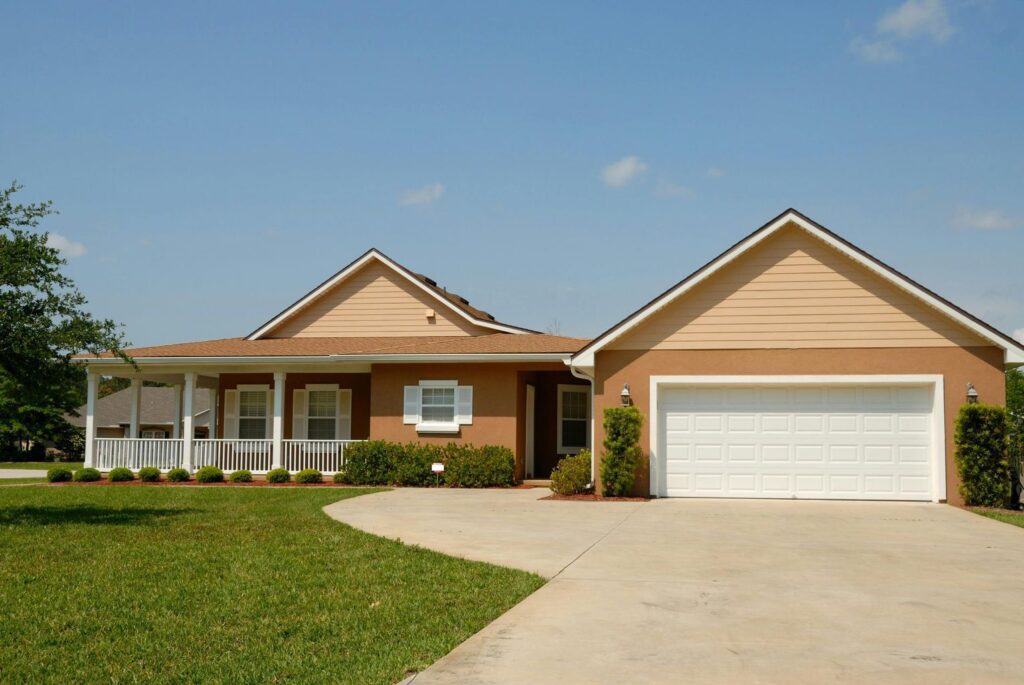Are you searching for dependable roof ventilation options that fit your budget? Selecting the appropriate system is significant for keeping a healthy home, particularly in severe weather. In this article, we will examine affordable solutions that are reliable and efficient. From different vent types to tips for self-installation, learn how to enhance your home’s airflow and comfort without breaking the bank.
Understanding Roof Ventilation
Homeowners should consider the size of their unfinished attic, which can be 24″, 30″, or even larger, and the amount of water vapor that can accumulate inside. This is where proper attic ventilation is important, allowing moisture to escape through exhaust vents while intake vents bring in fresh air. Options like ridge vents or turbine ventilators can be selected based on airflow needs measured in cfm.
For added efficiency, products such as eave vents and solar exhaust fans help manage heat, ensuring that the roof lasts longer. Some may think that any vent suffices, but selecting options like tri-built or braced turbine types and using adequate fasteners, sealants, and roofing nails during installation is necessary. Misunderstandings can lead individuals to overlook practical upgrades, like using polyurethane foam for sealing pipe flashings.
Importance of Proper Roof Ventilation
Inadequate roof ventilation can lead to serious issues for a home’s structural integrity and energy efficiency.
For example, an unfinished attic may collect excessive water vapor, which can cause the insulation to become wet and promote mold growth. This not only damages the insulation but can also weaken roofing materials like shingles, thereby shortening their lifespan. Proper attic ventilation, with products like intake and exhaust vents, allows for consistent airflow, which helps to regulate temperature and moisture. Homeowners can identify the need for better ventilation by checking for signs such as high energy bills, increased humidity inside the home, or visible mold and rot in the attic. Items like turbine ventilators and ridge vents, along with proper fasteners and sealants, ensure effective airflow and energy savings.
Discounted Roof Ventilation Solutions in the Market
Discounted roof ventilation solutions offer features such as tri-built designs and various sizing options to fit different roofing needs. Options like ridge vents and exhaust fans work together with intake vents and eave vents to manage water vapor efficiently in an unfinished attic. Solar-powered systems can enhance energy savings over time, often allowing homeowners to qualify for tax credits, making these solutions more appealing.
To evaluate cost-effectiveness, homeowners should consider potential savings on energy bills, maintenance costs, and the lifespan of products that often come with warranties. Reliability can be assessed through the materials used, such as durable fasteners, sealants, and polyurethane foam. Features like variable-speed turbines or turbine ventilators and the presence of dampers further indicate quality performance.
Choices in the marketplace, including options marked as “seconds” or slightly dented, often come with reduced prices while maintaining functionality. Downloadable certification from manufacturers ensures proper guidance for installation and compliance, making these solutions a smart choice.
Types of Roof Ventilation Systems
Static Vents
Static vents assist in removing heat and moisture from an unfinished attic, as trapped water vapor can lead to damage over time. They are usually positioned along the roofline and operate without electricity, making them simpler to maintain than powered exhaust fans. Unlike turbine ventilators or direct drive systems, static vents depend entirely on natural airflow.
When setting up these vents, the number and placement are significant; a common guideline is to provide one square foot of vent area for every 300 square feet of attic space.
For example, combining eave vents and 12″ ridge vents promotes better airflow, especially when used with variable speed dampers that adjust to changing conditions. Furthermore, incorporating quality fasteners and sealants during installation helps prevent leaks, which is important for roof integrity. Considering solar options and available tax credits can also boost the value of these products. Proper installation can be backed by accessories and warranties for reassurance, ensuring that the attic ventilation system stays effective for years to come.
Powered Ventilation Systems
Powered ventilation systems in residential roofing offer various advantages. They effectively control water vapor in an unfinished attic, reducing moisture accumulation and the risk of mold growth. Systems like direct drive exhaust fans provide high airflow, measured in cfm, surpassing passive solutions such as eave vents and ridge vents. Unlike static systems, powered options can actively vent hot air, making warm months more tolerable.
Homeowners should evaluate the size and type of their attic, choosing among 18″, 24″, or even 30″ models based on their ventilation requirements. Fasteners, installation accessories, and sealing with polyurethane foam are important for peak performance. Tax credits may be available for solar models, offering additional incentives to opt for energy-efficient solutions. Dented or “seconds” products can help lower expenses while maintaining quality. A warranty should also be considered to guarantee durability.
Solar Roofblasters
Solar Roofblasters offer numerous benefits compared to conventional ventilation systems. They harness solar energy, reducing dependency on electricity and potentially lowering monthly expenses. This environmentally friendly choice is particularly beneficial for homes with unfinished attics, as it effectively controls moisture and humidity, helping to prevent mold issues.
When choosing Solar Roofblasters, it is important to assess their airflow capacity, which is measured in cfm (cubic feet per minute), and select the appropriate size. Necessary installation accessories, including fasteners and roofing nails, contribute to a secure setup. Optional features like integrated dampers or variable speed settings can improve functionality. Homeowners should review available warranty options and access manuals for effective installation.
Making an informed choice promotes adequate airflow, coordinating exhaust fans, ridge vents, and intake vents that facilitate attic ventilation alongside options like braced turbines or turbine ventilators that maintain durability even when incorporating poly foam or sealants.
How to Choose Discounted Roof Ventilation Solutions
When evaluating the long-term cost-effectiveness of roof ventilation solutions, consider the type of system, such as tri-built options versus traditional vents. Examining CFM ratings for exhaust fans and the efficiency of turbine ventilators matters. The type of intake and eave vents also influence performance, especially in handling water vapor in an unfinished attic.
Choosing the right roof ventilation system means looking at warranty lengths and installation accessories like roofing nails, fasteners, and sealants.
Installation of Roof Ventilation Systems
To ensure a proper installation of roof ventilation systems, starting with the right products is important. Intake vents and exhaust vents work together to allow for airflow. A combination of eave vents and ridge vents, along with recommended sizes like 18″, 24″, and 30″, allows for maximum efficiency. Secure all components with proper fasteners, such as roofing nails and a supportive braced turbine.
Measuring the attic’s square footage helps calculate the required cfm for air exchange when determining placement. Managing water vapor from an unfinished attic can be a challenge, as it can lead to mold if not ventilated correctly. Tools such as dampers and exhaust fans assist in controlling airflow. Sealants and polyurethane foam help prevent leaks around pipe flashings. For any dented products, consider looking for seconds at discounted prices.
Maintenance Tips for Roof Ventilation
Homeowners should regularly inspect their roof ventilation systems by checking eave vents and intake vents for debris or blockages, ensuring fresh air flows into the unfinished attic. They ought to clear any dirt, leaves, or nests that could restrict airflow. Maintenance should be performed at least twice a year, particularly before the summer heat and winter cold, to ensure that ridge vents, turbine ventilators, and exhaust fans are functioning properly.
It’s also wise to look for signs of wear, like dents in metal vents or damaged seals, and to replace fasteners where needed. Common practices include applying sealants around vents, using roofing nails to secure connections, and ensuring vents like the braced turbine or solar fans are free of obstructions. Homeowners might also consider replacing filters in direct drive exhaust fans as necessary and checking the cfm ratings to see if performance aligns with expectations.
FAQs
How can I determine which roof ventilation solution is best for my home?
Assess your attic’s size and insulation, then consult a roofing professional. Consider options like ridge vents for continuous airflow or soffit vents for intake. Use a combination of turbine vents for efficiency or gable vents for added circulation. Ensure proper balance between intake and exhaust for optimal results.
Are the discounted roof ventilation solutions reliable and durable?
Yes, discounted roof ventilation solutions can be reliable and durable. Look for products with warranties and positive customer reviews. Always check material specifications for assurance.
How do I install the discounted roof ventilation solutions I purchase?
To install discounted roof ventilation solutions, follow these steps: 1) Gather materials (screws, sealant). 2) Remove old vents. 3) Position new vents according to instructions. 4) Secure with screws and apply sealant around the edges. 5) Check for leaks after installation. Consider hiring a professional if unsure.
Improve your home’s ventilation with discounted roof solutions from Houston’s Roofing co! Our reliable, budget-friendly options enhance airflow and protect your roof without the high costs. Contact us today to explore trusted ventilation solutions designed to fit your budget!

